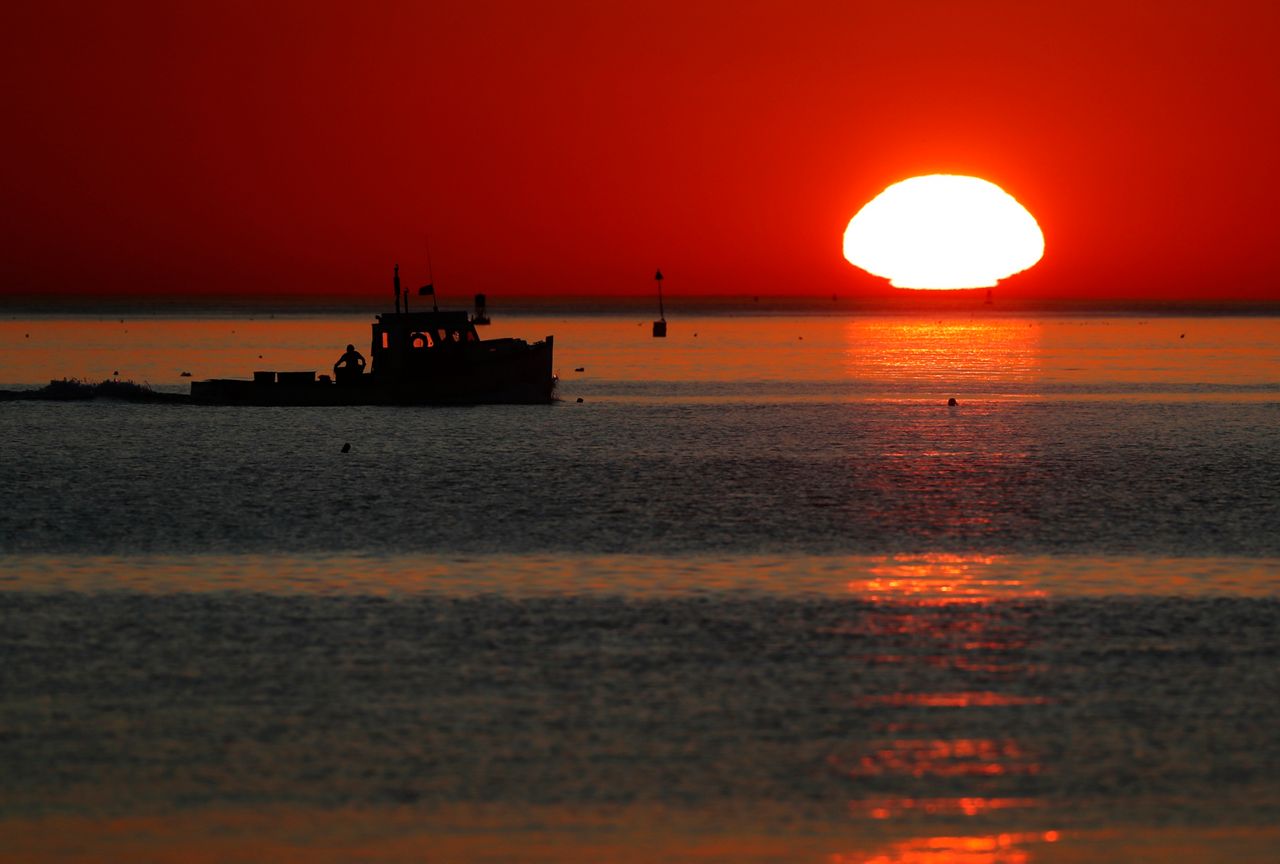Before TV meteorologists, websites and smartphones, people looked to the sky to predict weather. They would study how the clouds changed and when wind directions would shift in order to forecast weather patterns.
Mariners proved to be skilled forecasters. Weather changes meant sea conditions changed, too.
Farmers also had to pay close attention to the weather changes so they knew how it could affect their crops.
To remember what to look for or what different signs meant, people would make up sayings and rhymes. Some of them have lasted through the ages and are still popular today!
“Mares’ tails and mackerel scales make lofty ships carry low sails”
Mares’ tails are high, wispy cirrus clouds and sometimes resemble a horse’s tail flowing in the wind. Mackerel scales are cirrocumulus clouds that look like fish scales in the sky and often form ahead of an approaching warm front.
As the front moves in, it will cause the winds to shift and bring rain or storms.
Cirrocumulus clouds over the White House. (AP Photo/Jacquelyn Martin)
“Red sky at night, sailors delight. Red sky in morning, sailors take warning”
Reddish colors mean that the air may be dusty and dry, trapped by high pressure. At sunrise and sunset, light is passing through more atmosphere, thus scattering the blue light and leaving only red when there are more particles.
In our part of the world, most weather systems move from west to east. Since the sun sets in the west, a red sky indicates dry air is moving in from the west, which is brings good weather.
The opposite is true with a red sunrise in the east. The high pressure system has moved past, and a storm system usually follows with an area of low pressure.

A boat heads out to sea near Portland, Maine. (AP Photo/Robert F. Bukaty)
This weather folklore can be traced back to hundreds of years! Back in 1593, William Shakespeare wrote about it in his poem “Venus and Adonis”:
Like a red morn, that ever yet betoken’d
Wreck to the seaman, tempest to the field
Sorrow to shepherd, woe unto the birds,
Gusts and foul flaws to herdsmen and to herds.
In fact, the Bible even references this weather wisdom in the 16th chapter of the Book of Matthew.
“A halo around the sun or moon means we can expect rain quite soon”
A halo can form around a bright moon or sun. This is caused by the refraction of the light passing through the ice crystals that make up high cirrus clouds. These types of clouds can be the first clouds to appear ahead of a warm front.
“When leaves turn their back, ’tis a sign it’s going to rain”
Trees such as oak and maple have leaves that will curl when the humidity is very high and the wind is blowing strongly. These are typical conditions when a storm is approaching.
“You can tell the temperature by counting a cricket’s chirp”
Count the number of chirps in 14 seconds and then add 40. That’s a good approximation of the current temperature.
Crickets chirp faster when the air is warmer and slower when it’s colder.
Our team of meteorologists dives deep into the science of weather and breaks down timely weather data and information. To view more weather and climate stories, check out our weather blogs section.

